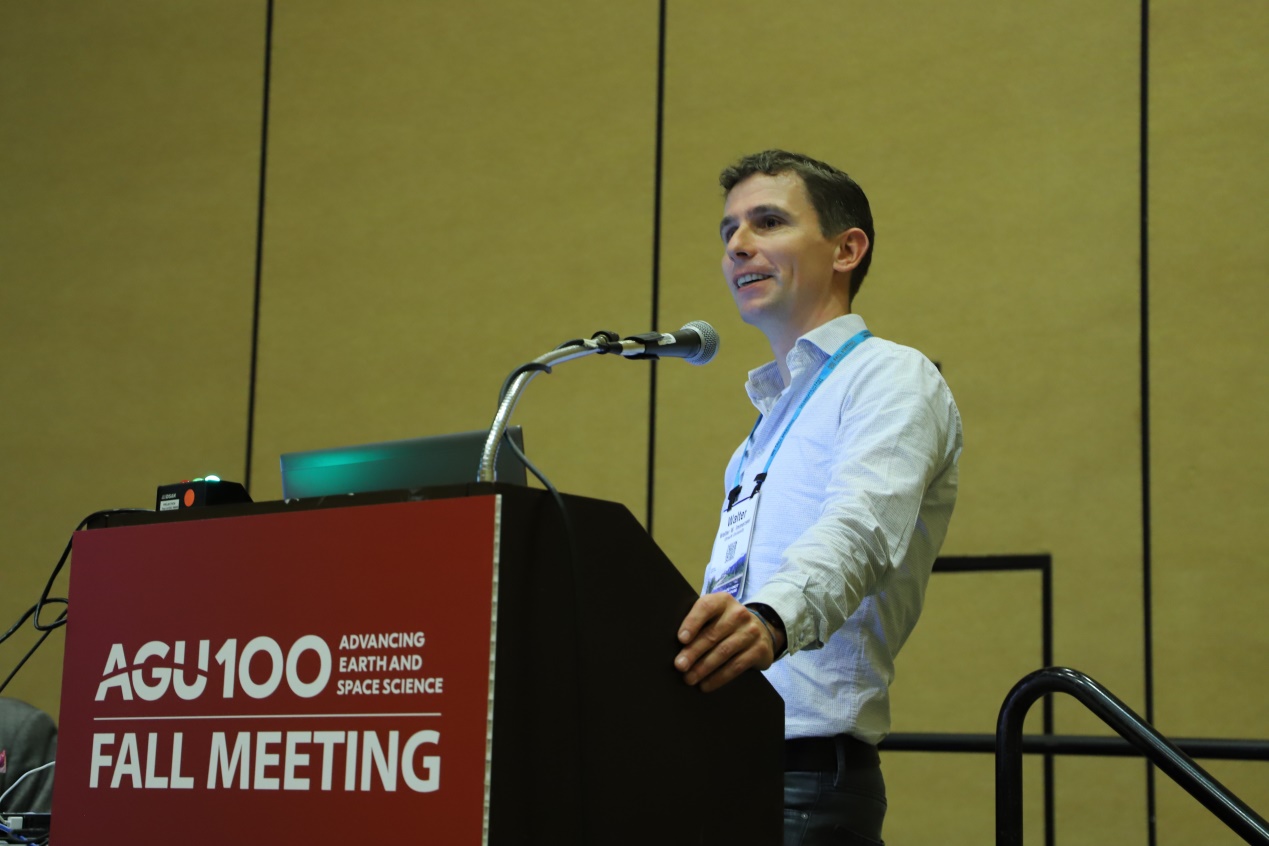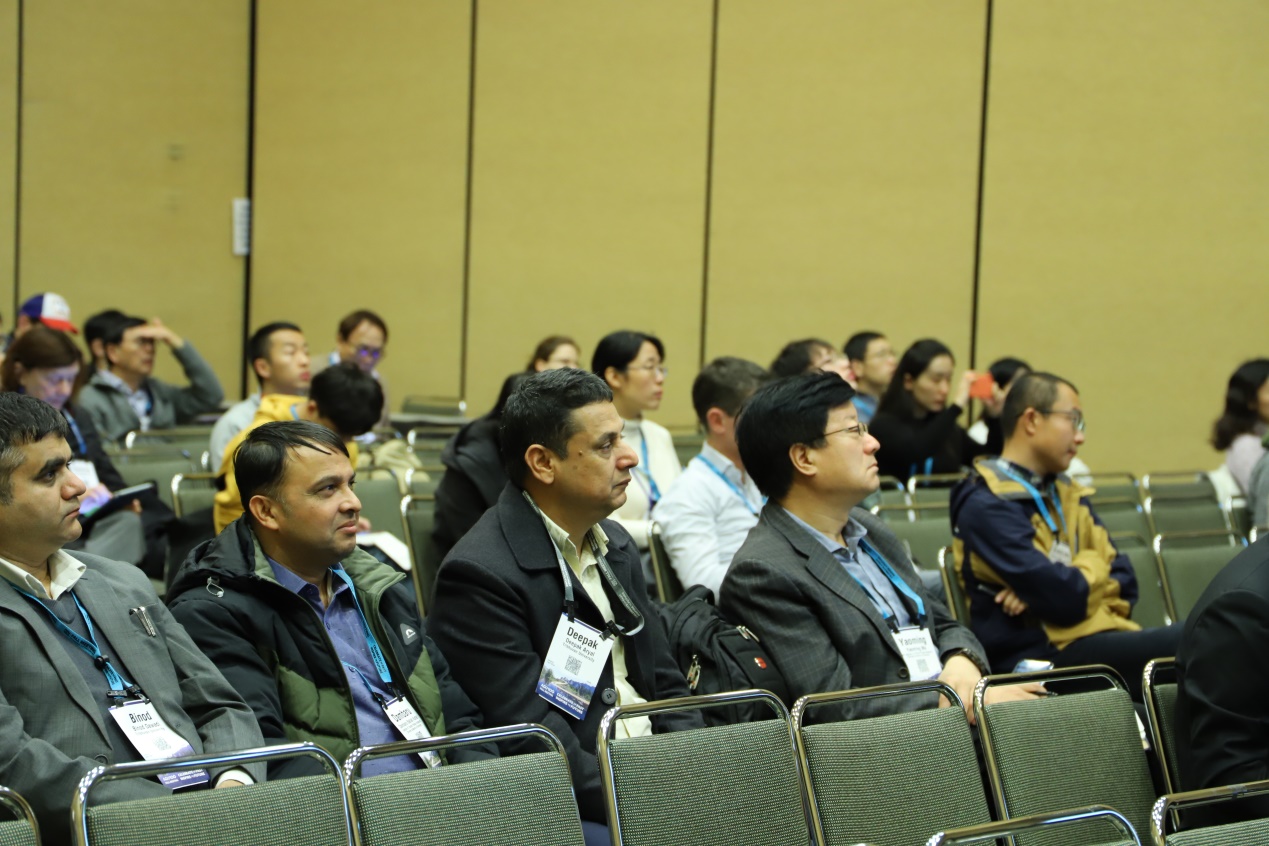Third Pole Environment (TPE) convened a session on “Third Pole Environment Under Global Changes” from Dec. 12-13 at the 2019 AGU (American Geophysical Union) Fall Meeting in San Francisco. The TPE session comprised 22 oral presentations and 62 poster presentations revolving around Third Pole research results. The session, which mainly focused on changes in Asian water towers, enhanced the influence of TPE’s international program with its impressive roster of global scientists and intellectually rigorous research.
TPE co-chairs Prof. YAO Tandong, professor of the Institute of Tibetan Plateau Research and Member of the Chinese Academy of Sciences (CAS), and Prof. Lonnie G. Thompson, a Distinguished University Professor at The Ohio State University, led the session.

Prof. Yao Tandong and Prof. Lonnie G. Thompson talking with TPE scientists
Prof.Tobias Bolch(Mountain Cryosphere Research Group), an expert in remote sensing and the effects of climate change on glaciers from the University of St. Andrews, discussed changes in Third Pole region glaciers and the potential impact on glacial lakes and downstream communities in an invited talk. Prof.Walter Immerzeel (Mountain Hydrology), an expert in geo-informatics, water resource management and climate change from the University of Utrecht, also delivered an invited talk in which he provided insights into the recent increase in lake volume on the Tibetan Plateau, a phenomenon driven by the earlier onset and intensification of the Asian summer monsoon.

Prof. Walter Immerzeel delivering invited speech at AGU TPE session

Prof. Tobias Bolch delivering invited speech at AGU TPE session
On the observation front, Prof. WU Guangjian from the Institute of Tibetan Plateau Research of the Chinese Academy of Sciences (ITPCAS) reported evidence from ice cores that revealed atmospheric dust patterns over the past 100 years on the Tibetan Plateau. Prof. Lewis Owen from North Carolina State University shared findings from a study he co-authored, “Timing and extent of Quaternary glaciation in the Himalayan-Tibetan Orogen.” Dr. Jussi Griessinger from the University of Erlangen-Nuremberg discussed the paleoclimatological research potential of shrub ring d18O chronologies. Prof. Deepak Aryal from Tribhuvan University (TU) reported on severe thunderstorms during the pre-monsoon in the southern slopes of the Himalayas. Prof. Binod Dawadi, also from TU, introduced tree ring-based precipitation records from the Mt. Everest region of the central Himalayas.
On the remote sensing and modelling front, Prof. SHI Jiancheng from the Institute of Remote Sensing and Digital Earth (RADI), CAS made a presentation entitled, “Satellite Observations for Earth System Key Parameters in the Tibet Region.” Dr. ZHENG Guanheng from Tsinghua University discussed spatiotemporal change of frozen soil and its climate controls over the Tibetan Plateau for the 2002-2016 period. Dr. Olga V. Sergienko from Princeton University reported her team’s projection of future hydrological regimes in the Third Pole region based on analyses of contributions of glaciers to the region’s freshwater budget. Dr. Dambaru Kattel from ITPCAS introduced new approaches for precise temperature field quantification at unmeasured locations for glacier-hydro-climatic and ecological modelling.

AGU TPE session
In terms of the impact of these changes, Prof. WANG Ninglian from China’s Northwest University presented a case study from the Aral Sea Basin, which discussed the relationship among changes in glaciers, human activities and rump lakes in arid Central Asia. Prof. TANG Qiuhong from the Institute of Geographic Sciences and Natural Resources Research, CAS introduced his work on modelling the cascading impacts of alpine changes on downstream systems. Prof. ZHANG Tingjun from Lanzhou University made a presentation entitled, “Linkages and Remote Connections of Cryospheric Extent Change Between the Third Pole and the Arctic.”
The Asian water towers are ranked as world's most important and most threatened by a recent study published in Nature supported by Pan-TPE project of the TPE program. With the discussion on AGU, TPE will continue to investigate changes in the Asian water towers with its scientific projects such as Pan-TPE and The Second Tibetan Plateau Scientific Expedition and Research (STEP), as part of its efforts to promote regional sustainability.

AGU TPE session



